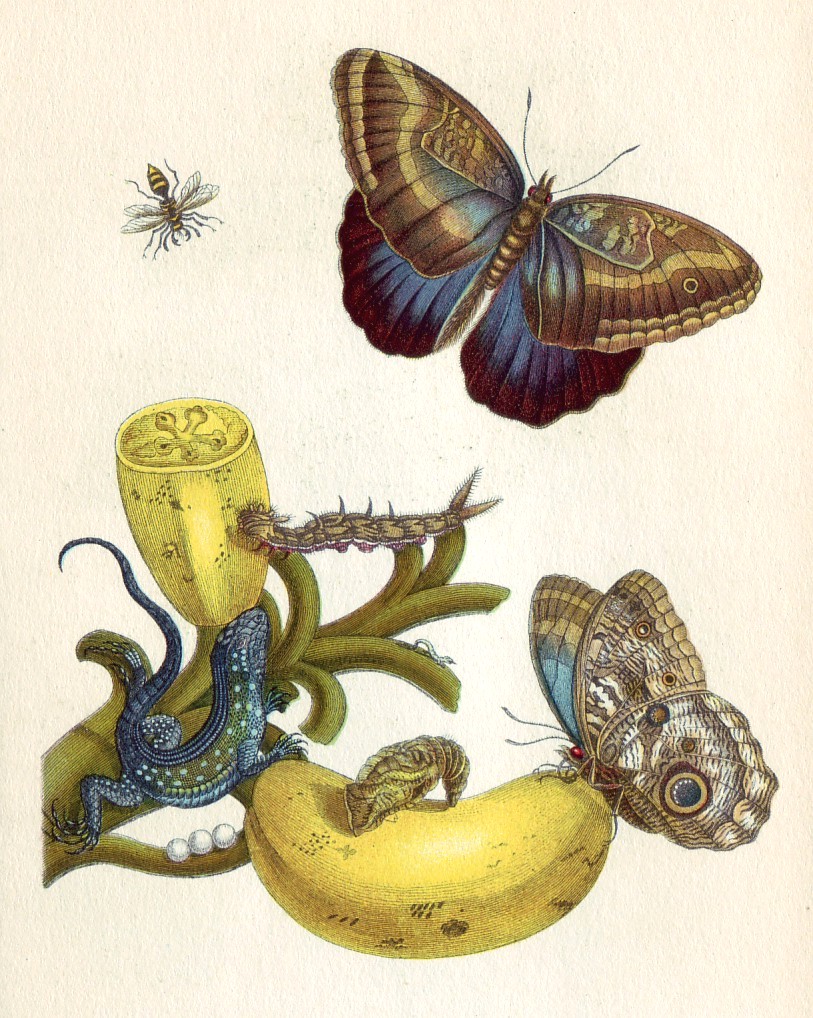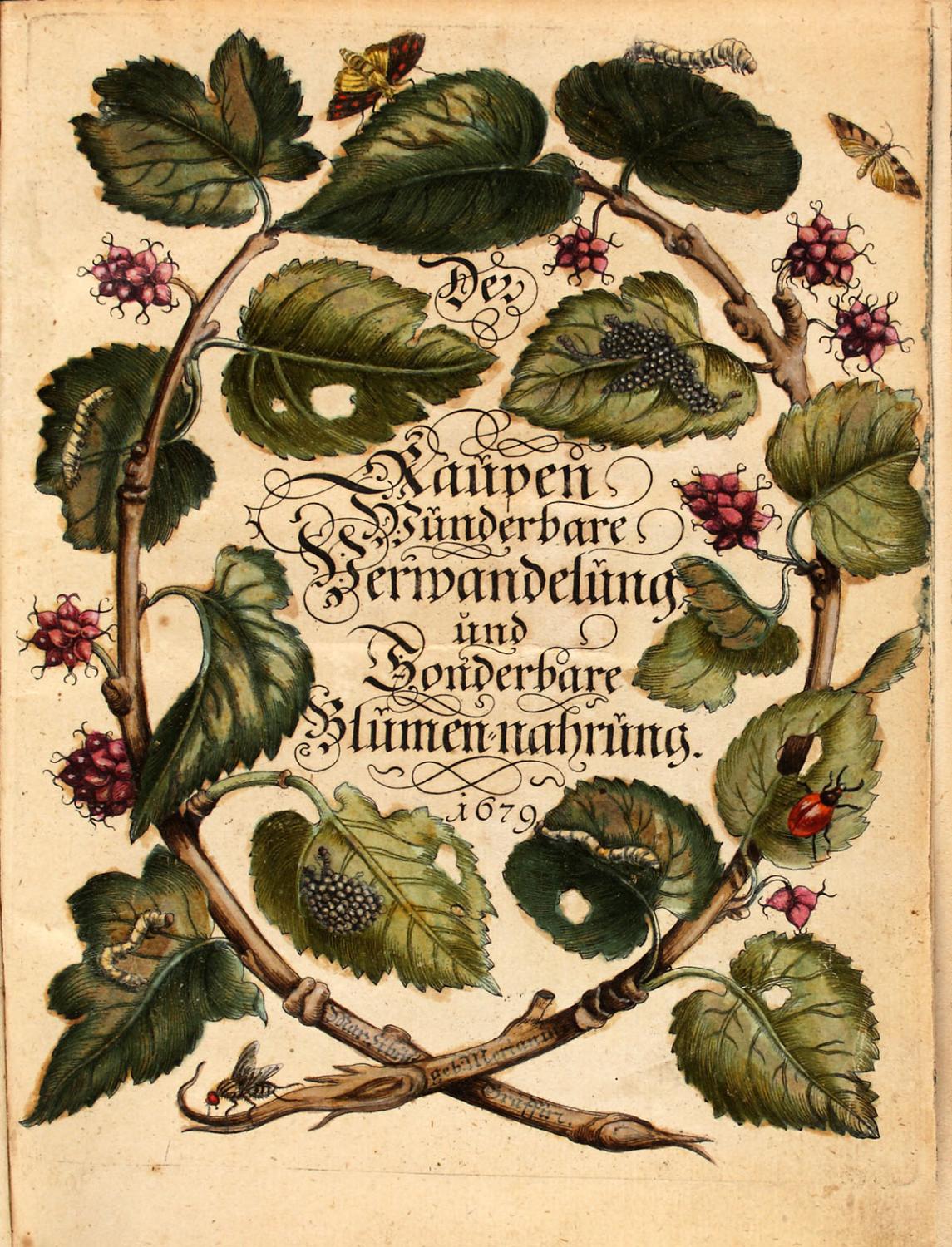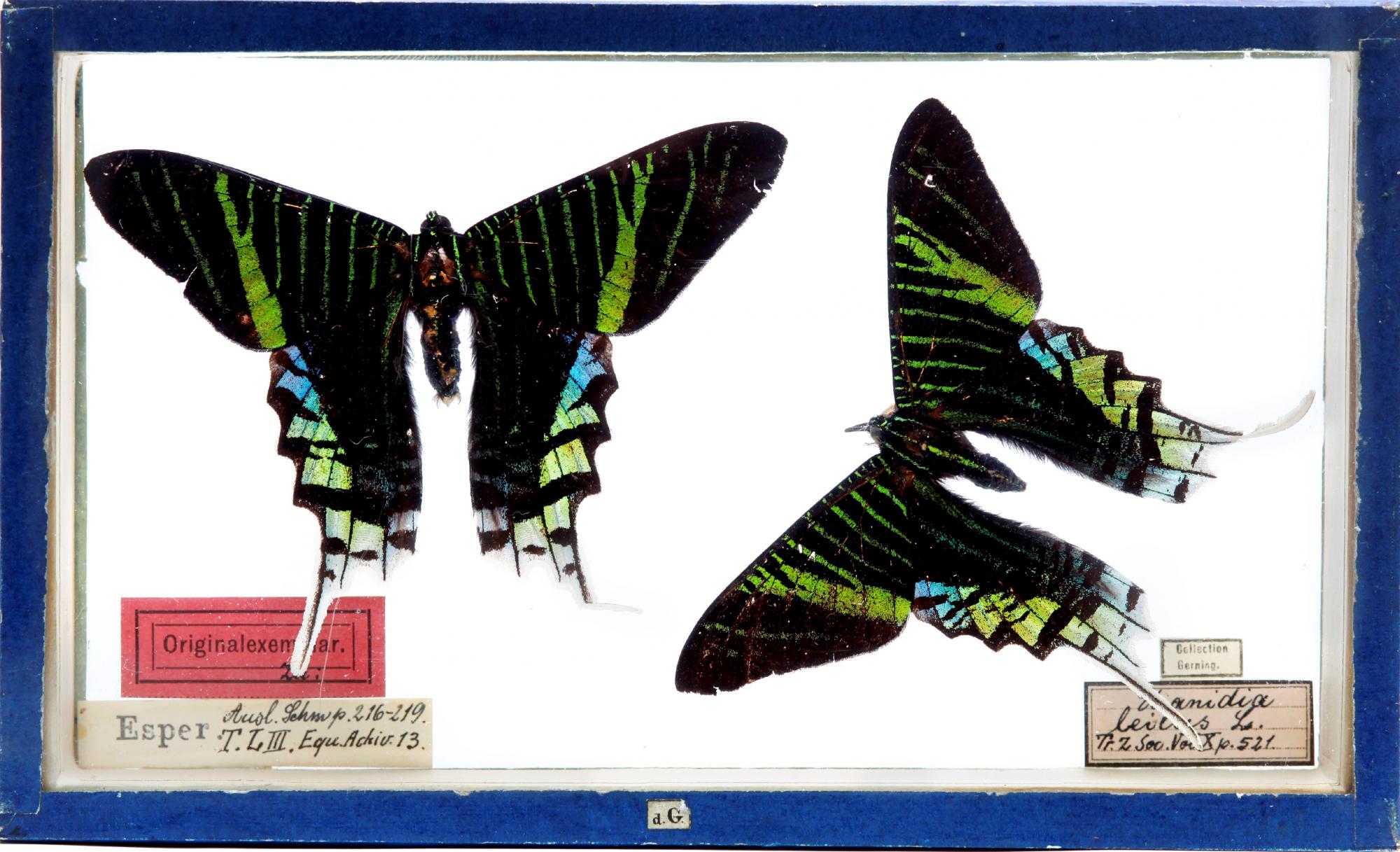* Life * Research * Experiments * Media < back
How Maria Sibylla Merian did her research and gained her knowledge
Maria Sibylla Merian was a very close observer of nature, which she had learned from her training in flower painting, and was able to translate these observations very exactly into drawings. She always researched in her surrounding environment: first in Frankfurt, then Nuremberg, later again in Frankfurt, West Friesland, and finally in Amsterdam. She then set off on a research trip to Suriname in South America.
 Merian described her journey’s goal in the introduction to her Suriname book: she had seen the illustrations of tropical insects in the collections of Amsterdam citizens, "but done in such a way that their origin and reproduction were missing - that is, how they grew out of caterpillars [...] into cocoons [...] and so on. All of this inspired me to undertake a great and expensive journey to Suriname [...] to continue my observations there. "
Merian described her journey’s goal in the introduction to her Suriname book: she had seen the illustrations of tropical insects in the collections of Amsterdam citizens, "but done in such a way that their origin and reproduction were missing - that is, how they grew out of caterpillars [...] into cocoons [...] and so on. All of this inspired me to undertake a great and expensive journey to Suriname [...] to continue my observations there. "
In Suriname, Maria Sibylla Merian and her daughter lived in the capital, Paramaribo. From there they went on several excursions in the region, including an expedition to the tropical rainforest, which 300 years ago was certainly very dangerous and exhausting. In her Suriname book she described the rainforest: “The forest is so thick with thistles and thorns that I had to send my slaves ahead with hatchets in hand to chop an opening for me to get through, which was extremely difficult.”
Despite everything the two women collected samples, made drawings, and noted their observations. They brought back numerous prepared insects and reptiles, meaning preserved dead specimens, and of course descriptions and drawings from their research trip.
How Maria Sibylla Merian came to her research subject
A brother of Maria Sibylla's stepfather grew silkworms. This was common at the time because Frankfurt was an important trading center for silk. At thirteen, she observed with her uncle attentively as a caterpillar wove its cocoon; this sparked her interest in science. She took some of the silkworms home, looked after them, and continued to observe them.
She then drew and described the development stages of the silkworm. Maria Sibylla also collected other caterpillars in the fields and meadows, kept them in boxes and cans, observing and drawing them with watercolors on parchment (a specially processed, thin animal skin). In this way she came to realize that butterflies go through stages of development, from egg to caterpillar and pupa to moth.
Even after Maria Sibylla Merian was married and moved to Nuremberg with her husband and child, she continued her research alongside her artistic activities. She continued to collect caterpillars from the surrounding area and recorded her findings. She also preserved dead butterflies and created a collection with which she could continue to work.
How Maria Sibylla Merian documented her findings

In 1679 her caterpillar book was published, in which Maria Sibylla Merian documented what she had learned through almost twenty years of scientific studies: namely that insects go through different stages of development. The book entitled "The Caterpillar, Marvelous Transformation and Strange Floral Food" contains 50 engravings with (mostly) two pages of text in German. This was very unusual at the time, because most of the scientific books were written in Latin.
Not only caterpillars and butterflies are depicted in this book, but also insects in all their stages of development and - this is what was special and new about Maria Sibylla Merian's work - with their forage plant. This means that on each sheet a small habitat is illustrated.

In 1683 she published the "other part" of the caterpillar book. While living with the Christian community at Waltha Castle, she began to review and reorganize her previous research, creating a reference book she continued the rest of her life.
When she moved to Amsterdam, she made illustrations for the planned third part of the caterpillar book, which was only published by her daughter Dorothea after the death of Maria Sibylla Merian in 1717.
Her Suriname book was published in 1705 in Dutch and Latin, under the title "Metamorphosis Insectorum Surinamensium". The volume, with 60 copper engravings and 70 x 50 cm in size, is considered her main work and made her famous all over the world.
Shortly before Maria Sibylla Merian died in 1717, she was visited by the doctor of Tsar Peter the Great from Russia. He bought the reference book, numerous watercolors and colored copper engravings from her. Tsar Peter the Great continued to buy the works of Maria Sibylla Merian even after the death. These are preserved today in the archive and the library of the Botanical Institute of the Russian Academy in St. Petersburg.
How Maria Sibylla Merian's findings were advanced and the importance of her research today
Although Maria Sibylla Merian's artistic and scientific work was greatly appreciated during her lifetime, it was later only known to a few scholars and collectors. Her most important book, "Metamorphosis Insectorum Surinamensium," disappeared into the libraries of a few universities. There were reprints of her books, but these were mostly of poor quality, and conveyed little of the special qualities of her work.
It was only in the 20th century that the works of Maria Sibylla Merian were rediscovered, through large art exhibitions. Viewers were, and continue to be, fascinated by her very precise prints and drawings. There was also a renewed interest in her books, which have now been reprinted in very good quality.

The most important part of Merian's butterfly collection came into the possession of Frankfurt collector and banker Johann Christian Gerning (1745–1802), and his son Johann Isaak von Gerning (1767–1837). It became the foundation of the natural history department of the Wiesbaden Museum, about 100 years later.

The very well-preserved specimens from the Merian collection are still used by museum scientists as reference objects for their research. The particular appearance and properties of the objects, for example a butterfly, are so distinct and described so precisely that they can be taken as an example to identify another butterfly. If it is exactly the same, it belongs to the same species; if it differs in its characteristics it does not belong.
The methods Maria Sibylla Merian used to gain her knowledge are also still relevant. Even today, scientists from research institutes go on long expeditions to distant countries. There, they must observe nature closely in order to discover and study the habitat of insects, spiders or other living things. Today of course modern, digital methods are used to record results. Previously unknown species are still constantly being found on such excursions. A researcher studying spiders has discovered about 300 new spider species in a period of just over 10 years.